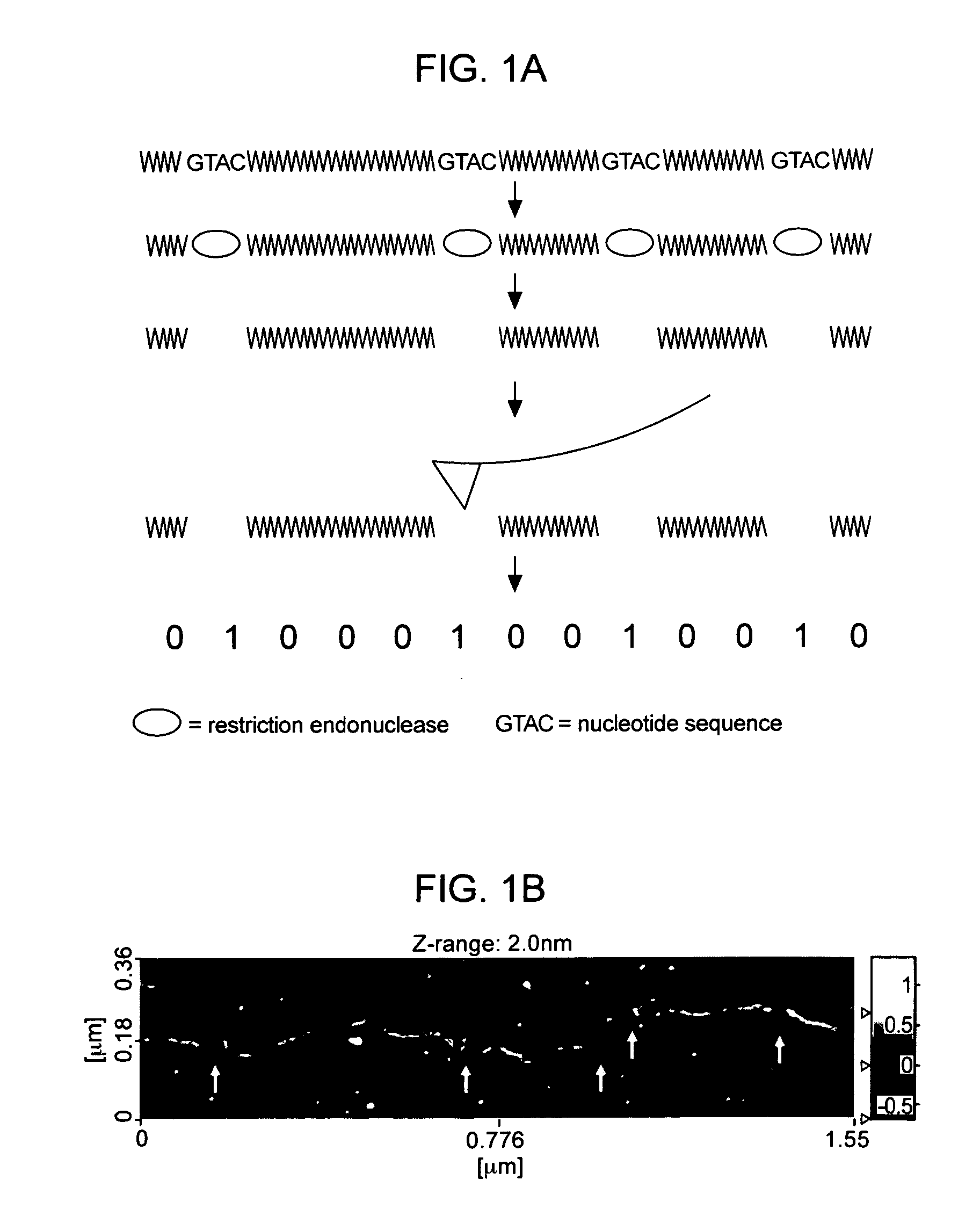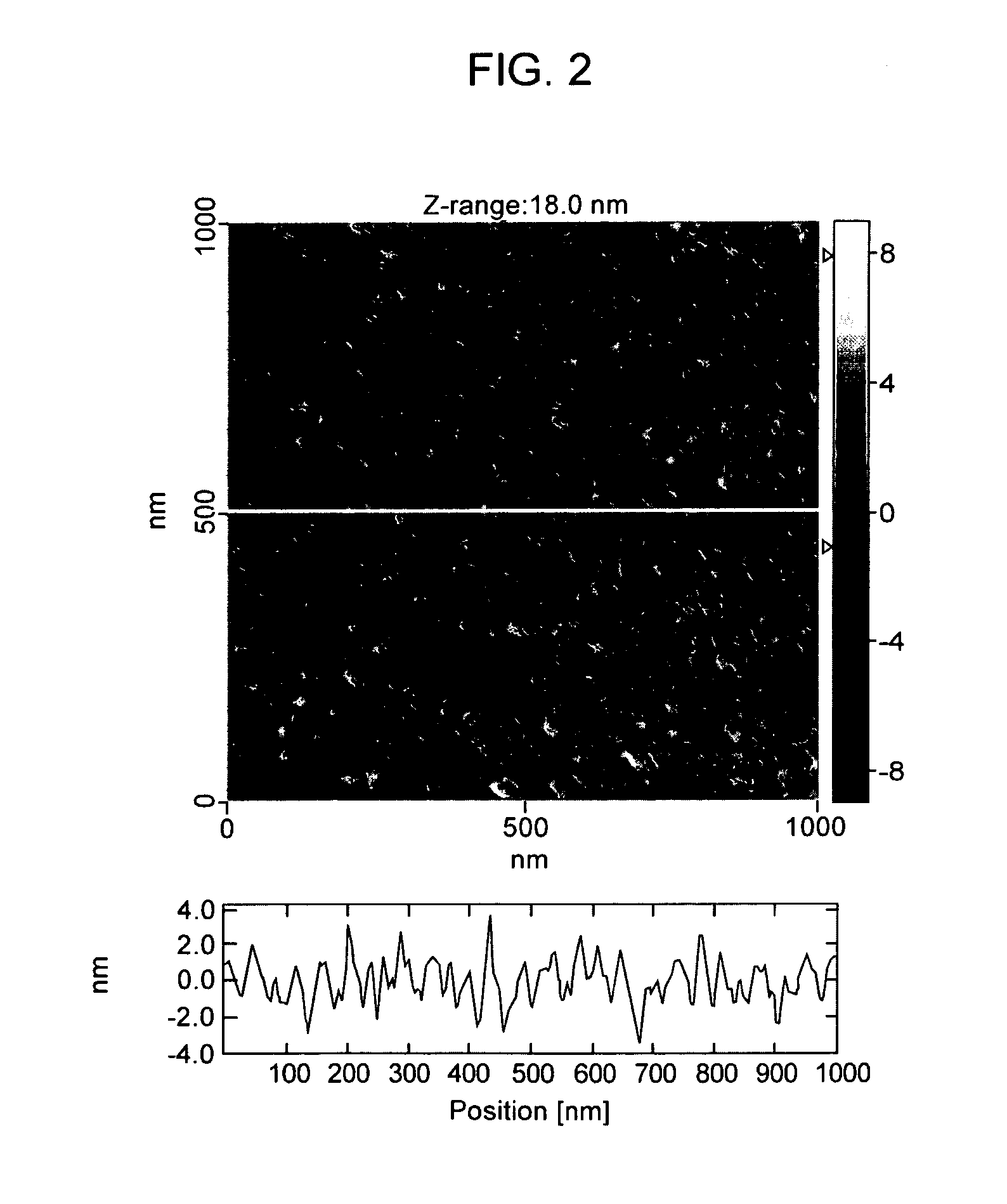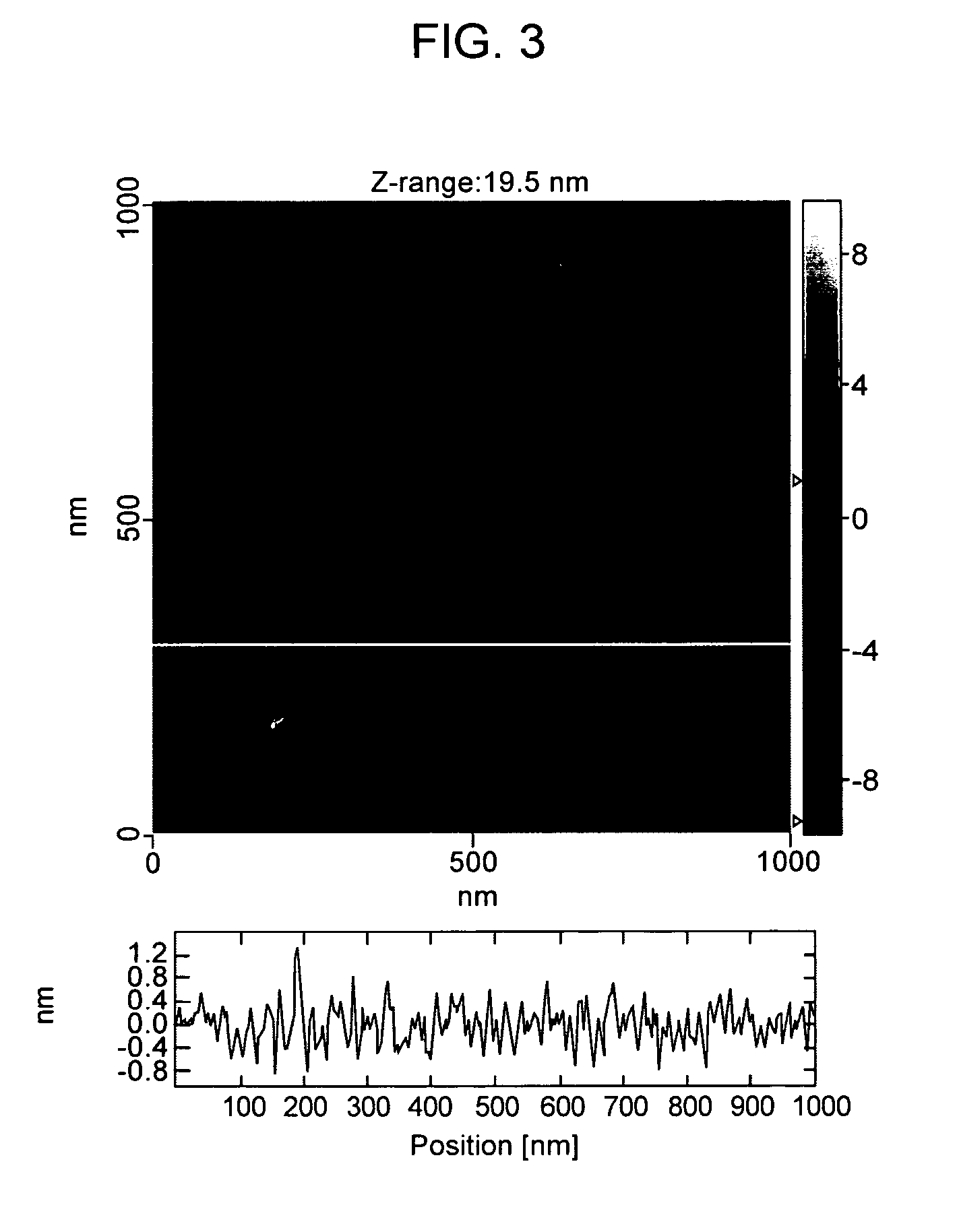Compositions and methods for analyzing immobilized nucleic acids
a nucleic acid and immobilized technology, applied in the field of nucleic acid substrates, can solve the problems of high sensitivity of detection methods, difficult to measure low abundance rnas without probe amplification, and high sensitivity of pcr-based amplification methods,
- Summary
- Abstract
- Description
- Claims
- Application Information
AI Technical Summary
Problems solved by technology
Method used
Image
Examples
example 1
Detecting Immobilized Nucleic Acid Fragments Using AFM
Materials and Methods
[0122] AFM. All AFM images were acquired with a Digital Instruments Bioscope AFM in tapping mode, using manufacturer-supplied TESP diving board cantilevers. Imaging was conducted at 22° C. and ˜30% relative humidity. DNA was processed and imaged on freshly cleaved mica derivatized with 3-aminopropyl triethoxysilane to provide a positive charge for DNA retention, as previously described (18). SPIP (Scanning Probe Image Processor) image processing software (Image Metrology) was used to remove high frequency scan line noise in all AFM images and to manually measure DNA backbone length profiles.
[0123] DNA. A truncated splice variant of CD44, designated CD44v, along with the pOTB7 plasmid containing full length CD44 were obtained from ATCC. The CD44 plus pOTB7 sample was produced by double digestion with XhoI and EcoRI to release the cDNA insert from the pOTB7 vector. The CD44v cDNA sequence corresponds to Gen...
example 2
Anchoring Nucleic Acids to an Insoluble Support
[0146]FIGS. 9-17 depict a method for immobilizing a nucleic acid onto the surface of an insoluble support.
[0147] A shadow mask is produced by milling slots or holes in a thin silicon nitride membrane (<1 micron thick). These slots or holes have the approximate dimensions of the features to be vapor deposited.
[0148] Nucleic acid molecules are elongated and deposited on an appropriate flat, non-soluble substrate. This substrate may or may not be derivatized, e.g., with APTES, etc.
[0149] Material is vapor deposited on the substrate through the shadow mask using a controlled method such as e-beam evaporation of the metal in vacuum. The shadow mask may be tilted with respect to the substrate surface so that effective aperture is thinner and thus the deposited features are smaller. The shadow mask may be moved slowly as the material is deposited so as to ‘write’ various features.
[0150] The features deposited on the substrate through the ...
example 3
[0152] In principle, high-resolution single molecule ordered restriction mapping provides an alternative approach to gene expression profiling, since a large number of cDNAs can be accurately clustered into species with similar maps and their cluster sizes directly estimated. For this purpose, the patterns of restriction sites in each cDNA molecule must provide a species-specific fingerprint or signature and two distinct species must be distinguishable by their signatures. These requirements are readily achieved in most ideal situations where each species differs from any other in their sequence composition, the mapping technology approaches single-base-pair resolution, and restriction enzymes almost always cleave with high fidelity and efficiency.
[0153] In reality, both mapping resolution and restriction enzyme digestion efficiency deviate from the ideal, but without seriously affecting the feasibility of this approach, as demonstrated with the following estimates of species resol...
PUM
| Property | Measurement | Unit |
|---|---|---|
| Length | aaaaa | aaaaa |
| Nanoscale particle size | aaaaa | aaaaa |
| Nanoscale particle size | aaaaa | aaaaa |
Abstract
Description
Claims
Application Information
 Login to View More
Login to View More - R&D
- Intellectual Property
- Life Sciences
- Materials
- Tech Scout
- Unparalleled Data Quality
- Higher Quality Content
- 60% Fewer Hallucinations
Browse by: Latest US Patents, China's latest patents, Technical Efficacy Thesaurus, Application Domain, Technology Topic, Popular Technical Reports.
© 2025 PatSnap. All rights reserved.Legal|Privacy policy|Modern Slavery Act Transparency Statement|Sitemap|About US| Contact US: help@patsnap.com



